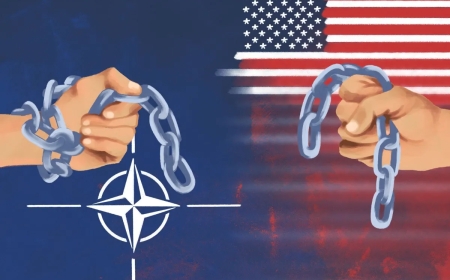Declining Solve Rates: Examining the Factors Behind the Decrease in Crime Resolution by Police
In the wake of demands for police reform three years ago, law enforcement agencies are facing a concerning trend: a decline in crime resolution rates. Hady Mawajdeh delves into the causes of this unsettling development in his report.

The Federal Bureau of Investigation's annual report, part of the Uniform Crime Reporting Program, reveals a nationwide shift in police effectiveness. Crime data analyst Jeff Asher emphasizes the significance of the Uniform Crime Reporting (UCR) data, which covers various aspects of law enforcement, including clearance rates for crimes. Asher highlights a notable decrease in murder clearance rates, dropping from above 60 percent in 2019 to just 52 percent in 2022. Beyond homicides, clearance rates for all violent crimes witnessed a decline from almost 46 percent in 2019 to 36.7 percent in 2022. A similar pattern emerged in property crimes, with clearance rates dropping from 17 percent to 12 percent during the same period. The report suggests a correlation between the drop in clearance rates and the events unfolding in American criminal justice since the police-involved killings of Breonna Taylor and George Floyd in 2020. Additionally, a significant exodus of officers from law enforcement, starting in 2020, has left many major cities with reduced staffing levels. Chief Eddie Garcia, representing the Dallas Police Department and serving as president of the Major Cities Chiefs Association, acknowledges the challenges in solving violent crimes. He points to staffing shortages as a primary issue, citing a shift in priorities toward maintaining patrol presence. Garcia emphasizes that the workload on detectives has increased, contributing to their overworked status. Garcia attributes staffing problems to a lack of support for police officers, particularly since 2020. He highlights the impact of the defund movement on law enforcement recruitment, stating that officers need to feel supported to engage in proactive policing. The sentiment of feeling overworked and disrespected has led to a decrease in morale among officers, affecting their willingness to be proactive in crime prevention. In response to the FBI data indicating a decline in solve rates, Garcia emphasizes the need for strong leadership, support from city government, and community trust. He acknowledges the importance of addressing accountability issues within the system, such as keeping violent criminals in custody and ensuring witness safety. As the nation grapples with this decline in crime resolution by police, Garcia stresses the importance of building trust between law enforcement and communities. He underscores the necessity of ongoing growth within police departments and the need for realistic expectations regarding solve rates, while also acknowledging the multifaceted challenges that contribute to the complexity of the issue.













































